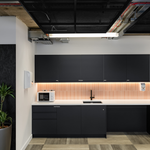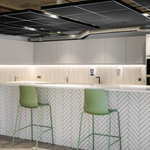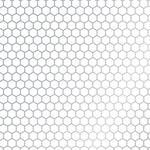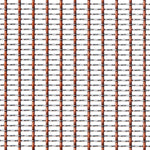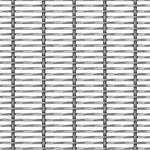You have no items in your shopping cart.
This year, we have seen exciting changes in materials, finishes, and design philosophy. Let’s look into the trends defining the future of architecture, focusing on materials, finishes, and the rising prominence of biophilic design.
The Increasing Use of “Real” Materials
Traditionally, we’ve worked with materials like aluminium, stainless steel, and mild steel. These staples continue to be used but are being complemented by a resurgence in copper, brass, and bronze. These “real” materials bring back authenticity and a sense of heritage, especially when paired with woven meshes that mix metals like stainless steel with brass or copper. This combination adds a contemporary twist to classic materials, offering a “modern heritage” aesthetic.
Adding texture with Finishes
While bronzes and golds remain popular, we’re noticing a trend toward softer, muted tones. Elegant champagne finishes, for example, are replacing the traditional bold golds, offering a more refined look. Gunmetal and grey bronze finishes are being chosen to add understated opulence to projects. These finishes are not just about colour but also texture. Rough, aged, and textured surfaces are making a statement.
The Biophilic Design Revolution
We will see a lot more of biophilic design in architecture and interior design next year. Biophilic means incorporating natural elements and aesthetics into design, creating spaces that feel organic and connected to the environment. At Amron, we’ve embraced this trend by working with finishes and materials that mimic wood, greenery, and earthy tones.
A standout project we’re currently working on involves a well-known data centre in England, and it features an expanded mesh facade in shades of green, mimicking the look of trees. It’s an excellent example of how biophilic principles can bring architecture closer to nature.

Colours Trends in 2025
Colour trends are moving in two directions. On one hand, earthy greens, browns, and muted natural shades are very popular, aligning with the biophilic ethos. However, there’s a rising interest in dynamic, pearlescent finishes—think blues that transition to purples and pinks. These bold yet refined choices complement the natural palette, adding vibrancy without overshadowing the earthy base.
Looking Ahead to Next Year
As we move into 2025, one thing is clear: biophilic design is here to stay. Whether it’s through the use of natural materials like bronze and copper, textured finishes that mimic organic surfaces, or colour palettes inspired by the earth, the architectural world is aligning itself with nature.
From green facades to champagne finishes, every element tells a story—a story rooted in nature and designed for the future. At Amron, we’re excited to continue exploring these trends and pushing the boundaries of what’s possible in architectural design.



